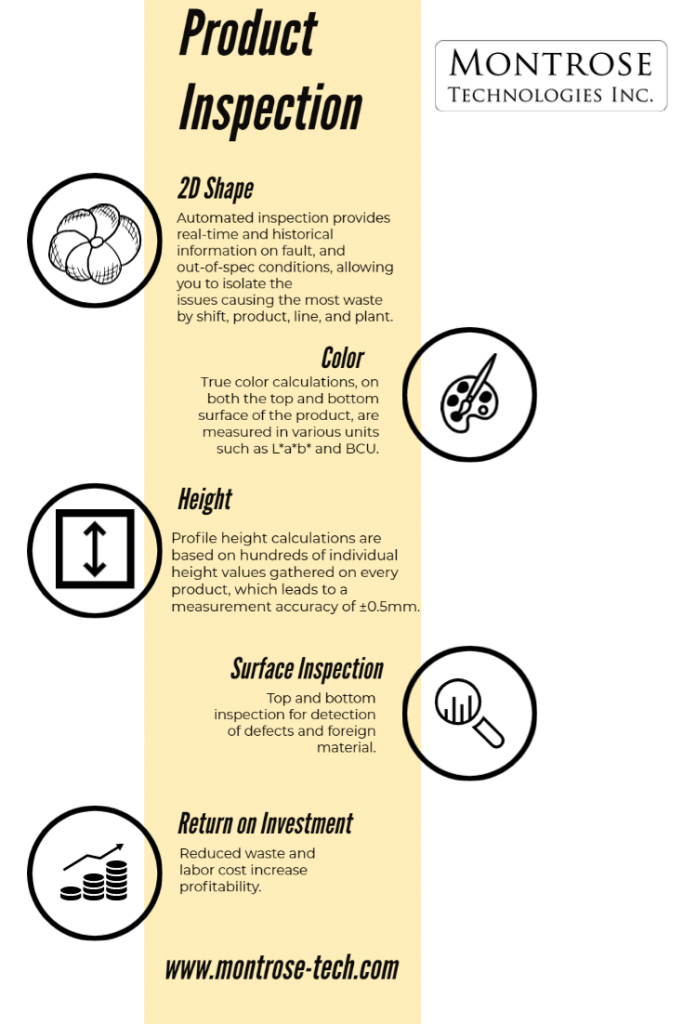Resources
Is it time to buy your first vision inpection system?
Move from a qualitative approach to inspection to a calibrated quantitative system with full archiving and analysis.
Moving to a vision inspection system reduces operating costs and waste, improves product quality and generates critical production data. Montrose Technology has developed a proprietary 2D/3D/color imaging engine that provides accurate size, shape and color characteristics for randomly-oriented, fast moving objects.
Blog Article: Is It Time to Purchase Your First Vision Inspection Systems for Food Production?
Cut Costs
With calibrated, accurate product information, operators are able to precisely control rejection parameters reducing the number of falsely rejected products that qualitative observation produces. In addition, real-time data allows changes to be made mid-process to address any issues that may arise. Post production analysis of this data allows users to refine their process further reducing waste and costs.
Save Time
Automated vision inspection systems are designed to reduce time for testing while increasing the accuracy of results. Systems run at speeds up to 50 objects per second, which would be impossible for manual inspection allowing the testing of every product rather than samples.
Archive Data for Analysis
Accurate, critical data is automatically collected by the software, stored in an easy to use format with built-in custom report generation. Historical information is then available for planning, process design and continuous efficiency increases.

Automated systems quatify a wide variety of physical attributes including:
- Diameter, length, width, surface area, volume and weight
- Height and slope
- Bake Color
- Topping color (coverage and count)
- Color in L*A*B* and BCU

